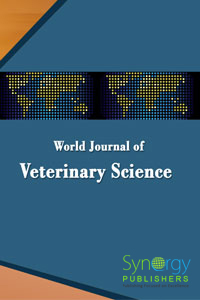
Livestock Management under Changing Climate Scenario in India Pages 25-32
P.K. Pankaj1, D.B.V. Ramana1, R. Pourouchottamane2 and S. Naskar2
1Central Research Institute for Dryland Agriculture, Hyderabad, India; 2NRC on Pig, Guwahati, Assam, India
DOI: http://dx.doi.org/10.12970/2310-0796.2013.01.01.5
Download PDFAbstract: Animal agriculture is a major contributor to climate change through various elements like air temperature, humidity, wind velocity, solar radiation and other factors. Heat is the major constraint in tropical and sub tropical climatic conditions which negatively affects production and reproduction of livestock species. Alterations of temperature and humidity profile may alter the productivity, reproductive efficiency and may aggravate the spread of disease and parasites into new regions. The current review have been framed to provide more insight into the effect of climate change on livestock production in India and how to alleviate the expected thorny picture of livestock production system. Climate can affect livestock both directly and indirectly. Livestock production is not only affected by climate change but also contributes to the cause. Greenhouse gas emissions by the livestock sector could be cut by as much as 30 percent through the wider use of existing best practices and technologies. Livestock production system is expected to be exposed to many challenges due to climate change in India. Climate change through raised temperature, humidity and solar radiation may alter the physiology of livestock, reducing production and reproductive efficiency of both male and female and altered morbidity and mortality rates. Options for alleviating heat stress include adjusting animals’ diets to minimize diet-induced thermogenesis (low fibre and low protein) or by increasing nutrient concentration in the feed to compensate for lower intake; taking measures to protect the animals from excessive heat load (shading/improving ventilation by using fans) or enhance heat loss from their bodies (Sprinklers/misters); or genetic selection for heat tolerance or bringing in types of animals that already have good heat tolerance. Livestock production and its economic efficiency depend on quantity and quality of feed and water that animals need to survive, produce and reproduce. In production systems where animals are fed on concentrates, rising grain prices (may be driven by climate change) increase the pressure to use animals that efficiently convert grains into meat, eggs or milk. The geographical and seasonal distributions of many infectious diseases, particularly vector borne, as well as those of many parasites and pests of various kinds are affected by climate. Different managemental options for reducing the effect of thermal stress are genetic approach, nutritional adjustments, managemental interventions, adequate water supply, providing feed to the animals during cool period, stocking density, provision of vegetative cover over the surrounding area, adequate ventilation, revival of common property resources (CPRs), intensive fodder production systems, use of unconventional resources as feed, etc.
Keywords: Climate change, climate variability, livestock, challenges, mitigation strategies. Read more

